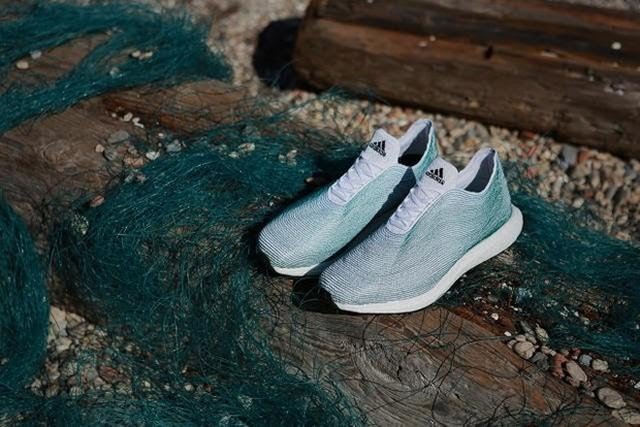Sustainable sneakers from the ocean trash
When a sustainable product is created, the common question is if the trend catches consumers and traders. Innovations that force to change habits and behaviors of an entire industry, ranging from producers to the final buyer, always generates debates.
Rescued garbage
Adidas decided to create the prototype of sustainable sneakers made almost entirely from recycled ocean litter. The company partnered with the organization Parley for the Ocean. This is an evidence that engaged companies can create more products with recycled material. Moreover, it emphasises the necessity to work hand in hand with organizations from environmental sector.
The upper part of the shoe was made entirely of threads and filaments taken from illegal nets and other garbage found on the seabed. The base was made of sustainable padded material. The non-profit marine life conservation organization Sea Shepherd Conservation Society also collaborated with the project. To get the material, they rescued the garbage on a 110-day expedition on the trail of a poaching vessel along the west coast of Africa.
Baltic marine litter
Parley for the Ocean is an organization where creators, thinkers and leaders come together to raise awareness about the disastrous state of the oceans. They collaborate on promising projects that can protect and conserve the oceans. Cyrill Gutsch, founder of Parley for the Ocean, said that the organization wants to establish the oceans as a key part of the climate change debate. “Our goal is to raise public awareness and inspire new collaborations that can contribute to protecting and preserving the oceans. We are extremely proud that Adidas is joining us on this mission and is putting its creative strength behind this partnership to show that it is possible to turn plastic from the ocean into something cool”, he said.
HELCOM, Baltic Marine Environment Protection Commission, announced that between 50 and 300 litter items are found for every hundred meters of Baltic Sea beaches. Around 70% of the litter items in the Baltic Sea are plastic. Besides having effects on the environment, marine litter also has a strong socioeconomic dimension. Marine litter may affect human activities and health. It reduces the value of tourism and recreation, or result in direct costs for removal. It can also damage fishing gear, contaminate catches or be a risk to navigational safety.
WWF Baltic says that over 80% of marine pollution comes from land-based activities. This non-governmental organisation is working to remove tonnes and tones of ghost nets from the Baltic. They also raise awareness of the impact of plastic waste in the marine environment. From plastic bags to pesticides — most of the waste, produced on land eventually reaches the oceans. They reach the Baltics through deliberate dumping or from run-off through drains and rivers.




